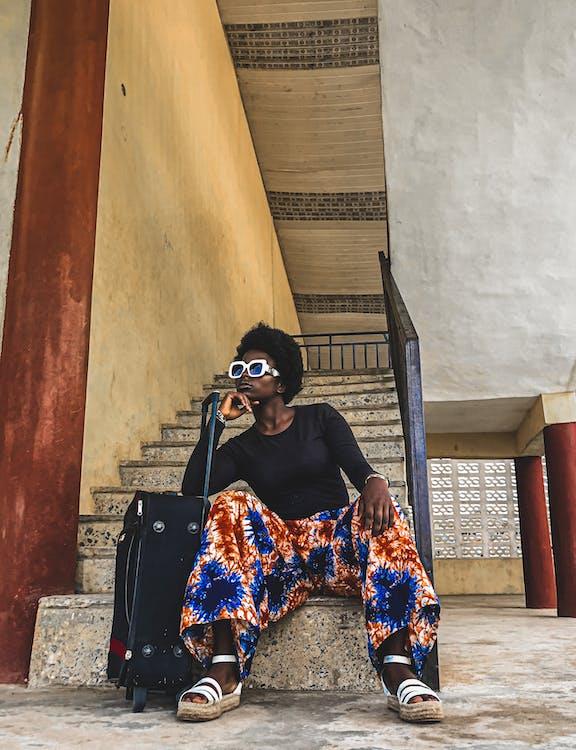Embarking on a solo journey has its blend of excitement and challenges. Although it can be intimidating, it has become more popular these days, especially among younger travelers. In fact, statistics show that 58% of millennials prefer to hit the road on their own, while only 47% of older generations say the same. It’s interesting to see how travel preferences are evolving.
This shift isn’t just about bucking tradition but diving into a deeper quest for personal growth, self-discovery, and relishing total freedom. Traveling alone provides a unique lens to view the world, filtered by our perceptions, unswayed by the influences of fellow travelers.
But, as with all adventures, solo travel requires preparation and mindfulness to truly reap its benefits. So, how does one go about navigating this journey? Let’s delve into the essentials of embarking on your first solo trip.

Choosing Your Accommodation
Deciding on a place to stay is one of the first major decisions you’ll make when setting out on a solo adventure. For instance, let’s say you’re planning a trip to Park City, Utah. Known for its breathtaking landscapes and outdoor activities, it’s a popular destination for many. But where to stay?
While hotels and hostels are always an option, opting for Park City vacation rentals can be a game-changer. They present an opportunity to immerse yourself in a local neighborhood, away from the commercialized areas. Imagine preparing a meal in your temporary kitchen with fresh ingredients sourced from a nearby market, or unwinding in a cozy living space after a day of exploration. This isn’t just about booking a place to sleep; it’s about a chance to experience life in your preferred destination on your terms.
Mental Preparation and Prioritizing Safety
Traveling solo is as much a journey inward as it is outward. Preparing mentally and emotionally is paramount. As you plan, you might grapple with mixed feelings—excitement for the adventure ahead and apprehension about the unknown. Building confidence to navigate unfamiliar terrains and interact with new people requires a shift in mindset. Remember, it’s okay to feel vulnerable; these feelings can guide your actions, ensuring you stay safe.
But safety should never be an afterthought. When on your own, being vigilant and proactive about your well-being becomes even more crucial. Trusting your gut feeling is your first line of defense. It’s an innate instinct that can alert you when something feels off. While embracing the serendipity of travel, it’s also wise to keep someone informed about your whereabouts. Whether it’s a quick message to a friend about your day’s plan or using location-sharing apps, these small acts offer an added layer of security. By intertwining emotional readiness with safety measures, you’re not only gearing up for a memorable experience but also ensuring that the memories are positive ones.
Building a Flexible Itinerary
While it’s tempting to plan out every minute of the trip, solo travel thrives on spontaneity. It’s about striking a balance. Know the places you want to visit, but also leave gaps in your itinerary for unexpected discoveries. This flexibility can lead to some of the most memorable experiences, like stumbling upon a local festival or a hidden cafe that wasn’t in any guidebook.
Connecting with Other Travelers
Traveling solo doesn’t mean you’ll always be alone. As you travel, you’ll meet other travelers and locals. Joining activities, staying in shared places, or just chatting at a cafe can lead to new, unexpected friendships. It’s all about balancing moments of solitude with opportunities for connection, savoring alone time but also welcoming new relationships.
Packing Smart
When you’re on your own, every item you pack carries added significance. Packing light ensures mobility, but you also need to ensure you have everything you need. Essentials would include clothing suitable for the weather, necessary electronics, and a small first-aid kit. However, the essence of packing for a solo trip is to be well-prepared without being burdened by unnecessary items. Remember, it’s easier to buy a forgotten item than to lug around excess baggage.

Documenting Your Journey
Capturing memories is an integral part of any trip. With the ease of smartphones and digital cameras, snapping moments becomes almost second nature. However, beyond photos, consider documenting your feelings, observations, and experiences. Journaling can offer a therapeutic space to reflect on your journey, the people you meet, and the emotions you experience. It’s about capturing picturesque landscapes and the transformative moments that shape you.
Conclusion
Solo travel is not just a journey across landscapes but also an inward exploration. It’s about pushing boundaries, challenging personal limits, and emerging with a richer understanding of yourself and the world. The freedom to choose, make decisions, and learn from them is unparalleled. As you consider or embark on this unique journey, savor every moment—both the highs and the lows. These experiences and stories become a part of who you are, enriching your life tapestry with threads of adventures, lessons, and memories.
The post Traveling Alone for the First Time? Here’s How to Do It appeared first on Travel Experta - Travel, Lifestyle, Freedom.
------------------------------------------
By: Marina 'Travel Experta'
Title: Traveling Alone for the First Time? Here’s How to Do It
Sourced From: travelexperta.com/traveling-alone-first-time/
Published Date: Wed, 27 Sep 2023 19:56:21 +0000
Did you miss our previous article...
https://consumernewsnetwork.com/travel-news/the-ai-trend-or-the-back-to-office-trend-is-responsible-for-these-5-remote-jobs-disappearing






